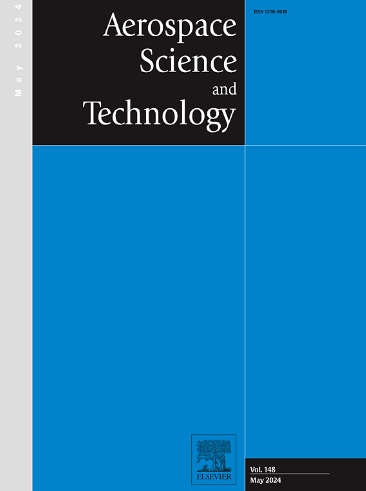基于初值生成器的近空飞行器在线计算制导安全模型预测静态规划
IF 5
1区 工程技术
Q1 ENGINEERING, AEROSPACE
引用次数: 0
摘要
对于计算资源有限的近空飞行器的在线轨迹规划,传统的模型预测静态规划方法面临两个主要挑战。首先,初始控制猜测不充分会导致轨迹发散或收敛缓慢,从而导致任务失败。其次,欧拉离散是一种基于点对点递归的小步局部算法。为了保证高精度的解,需要更多的离散点,导致计算效率和精度较低;同时,传统方法不能保证问题在约束域和可行域内求解,可能影响解的稳定性。为了解决第一个问题,开发了一个变系数近最优初始值生成器,以提供近似最优轨迹的初始控制猜测,防止后续迭代中的发散。针对第二个问题,提出了基于翻转radau伪谱的可信域约束模型预测静态规划。该方法减少了离散点的数量,直接优化了性能指标,提高了效率;同时,信任区域提高了精度,保证了更新后的轨迹与参考轨迹保持接近。最后,上述方法的结合大大提高了在线轨迹规划的计算效率和精度。将该方法应用于近空飞行器,快速高精度解的优化时间缩短了25%,并将反拉道伪谱的终端定位精度从43 m提高到1 m。本文章由计算机程序翻译,如有差异,请以英文原文为准。
Secure model predictive static programming with initial value generator for online computational guidance of near-space vehicles
For online trajectory programming of near-space vehicles with limited computation resources, conventional model predictive static programming approaches have two main challenges. Firstly, an inadequate initial control guess can lead to trajectory divergence or slow convergence, resulting in mission failure. Secondly, Euler discretization is a small-step local algorithm by point-to-point recursion. To ensure high precision solution, more discretization points are required, leading to low computation efficiency and accuracy; meanwhile conventional methods cannot guarantee that the problems are solved within the constraints and feasible domains, potentially affecting the solution stability. To solve the first problem, a variable coefficient near-optimal initial value generator is developed to provide an initial control guess that approximates the optimal trajectory, preventing divergence in subsequent iterations. To address the second problem, the trust-region constrained model predictive static programming is proposed with flipped-Radau pseudospectrum. This method reduces the number of discretization points and optimizes the performance index directly, thereby enhancing efficiency; meanwhile the trust region improves accuracy and ensures the updated trajectory remains close to the reference trajectory. Finally, the combination of above approaches enhances the calculating efficiency and precision significantly for online trajectory programming. Applied to a near-space vehicle, the proposed method reduces optimization time by 25 % for rapid and high-precision solutions, and improves terminal position accuracy from 43 m to 1 m with flipped-Radau pseudospectrum.
求助全文
通过发布文献求助,成功后即可免费获取论文全文。
去求助
来源期刊

Aerospace Science and Technology
工程技术-工程:宇航
CiteScore
10.30
自引率
28.60%
发文量
654
审稿时长
54 days
期刊介绍:
Aerospace Science and Technology publishes articles of outstanding scientific quality. Each article is reviewed by two referees. The journal welcomes papers from a wide range of countries. This journal publishes original papers, review articles and short communications related to all fields of aerospace research, fundamental and applied, potential applications of which are clearly related to:
• The design and the manufacture of aircraft, helicopters, missiles, launchers and satellites
• The control of their environment
• The study of various systems they are involved in, as supports or as targets.
Authors are invited to submit papers on new advances in the following topics to aerospace applications:
• Fluid dynamics
• Energetics and propulsion
• Materials and structures
• Flight mechanics
• Navigation, guidance and control
• Acoustics
• Optics
• Electromagnetism and radar
• Signal and image processing
• Information processing
• Data fusion
• Decision aid
• Human behaviour
• Robotics and intelligent systems
• Complex system engineering.
Etc.
 求助内容:
求助内容: 应助结果提醒方式:
应助结果提醒方式:


